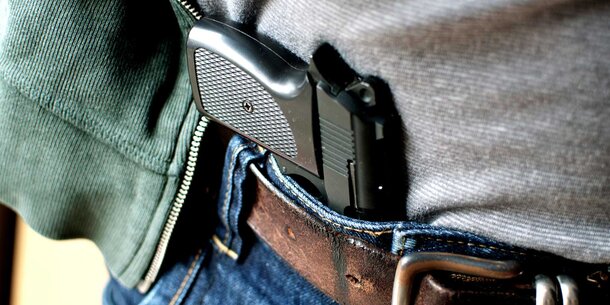In December, the Supreme Court is slated to hear oral arguments in a major Second Amendment case. The Court is evaluating the constitutionality of a New York City restriction on transporting licensed handguns to homes or shooting ranges outside city limits. (The law was recently repealed but the case is still moving forward.) The fact that the case involves handguns in particular is significant because in 2008, the Supreme Court placed handguns atop the Second Amendment hierarchy of “arms” because of their supposed popularity for self-defense. A closer look suggests that was a thin reed on which to rest a constitutional holding.
In the case, District of Columbia v. Heller, the Supreme Court struck down two Washington, DC, laws because they denied the right to keep handguns in the home and render them operable when needed for self-defense. An important aspect of the Court’s reasoning was that handguns receive maximal protection because they are “the most popular weapon chosen by Americans for self-defense in the home.” With few exceptions, that sweeping assertion has evaded close scrutiny.
Heller’s emphasis on the handgun’s appeal was unambiguous and consequential. The handgun, according to the majority, is the weapon “overwhelmingly chosen by American society for [lawful self-defense]” and the “quintessential self-defense weapon” according to “the American people.” That supposed popularity, according to the majority, insulated handguns from prohibition, no matter the strength of the government’s regulatory rationale or even whether the law allowed the possession of alternative firearms, not to mention non-firearm weapons.
And yet, nowhere did the Heller majority cite statistics to support its conclusion about relative weapon ownership. Instead, the justices cited the lower court opinion, which in turn cited a controversial 1995 article by criminologists Gary Kleck and Marc Gertz about the prevalence of defensive gun uses, not gun ownership. In their article, Kleck and Gertz suggest that Americans used guns to defend themselves as many as 2.5 million times annually — a number that far exceeds other estimates, which place the figure closer to 100,000. Indeed, data collected by the federal government suggests that only a tiny fraction of people engaging in self-defense use handguns, and an even smaller fraction of handguns are ever used in self-defense.
The Court’s endorsement of a controversial empirical study was either imprudent or inadvertent. More significantly, however, it was a red herring. The total number of defensive gun uses tells us nothing about how many Americans own handguns relative to other defensive weapons.
In fact, available data on handgun ownership suggests a very different conclusion than the one assumed by the Heller opinion. Handguns are no doubt “popular” in some ways — many millions are owned by Americans — but most eligible Americans do not possess handguns for self-defense or any other purpose. Indeed, the percentage of households that own any firearm is dropping, from 47 percent in 1980 to 31 percent in 2014. On an individual level, only 22 percent of American adults own a firearm. Among the minority of Americans who own a firearm, handguns have become more popular over time, now comprising 60 percent of new purchases. But that rise in popularity among gun owners is insufficient to declare handguns “the most popular weapon chosen by Americans for self-defense in the home.” Instead, the data suggests that “the most popular” self-defense weapon might not be a gun at all: the roughly 80 percent of American adults without a firearm are opting for a different self-defense plan — often another weapon (knives, for example, or ordinary household items like baseball bats that can be used as a weapon) in conjunction with other precautions, like alarm systems.
As a matter of constitutional methodology, the majority’s decision to peg constitutional protection to a contemporary weapon’s popularity is misguided. For example, by quickly regulating new weapons technology, the government can suppress markets and render a weapon “unpopular.”
The weapons industry, meanwhile, can influence weapon popularity in the opposite direction. Less than 20 years ago, one-fourth of gun owners said they possessed their guns for self-protection. Today, half cite protection. It may be no coincidence, then, that the shifting rationale tracks the gun lobby’s marketing strategy — away from sport and towards self-defense.
And what happens as a weapon’s popularity rises and falls? Does its constitutional status rise and fall as well? Weapon popularity is a highly malleable, unstable proxy for constitutional doctrine.
If popularity is nonetheless going to be the proxy, it should at least be grounded in solid empirics. The justices may be tempted to repeat Heller’s confident assertions about the handgun’s status as the “quintessential self-defense weapon” in the New York City case currently pending before the Supreme Court. Hopefully, they’ll instead rest their decision on more solid ground.
Eric Ruben is an assistant professor of law at SMU Dedman School of Law and a Brennan Center fellow.



